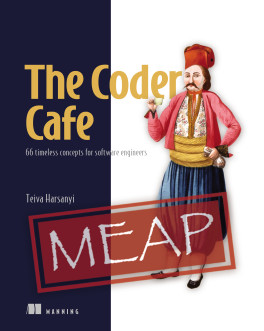pro $24.99 per month
- access to all Manning books, MEAPs, liveVideos, liveProjects, and audiobooks!
- choose one free eBook per month to keep
- exclusive 50% discount on all purchases
- renews monthly, pause or cancel renewal anytime
lite $19.99 per month
- access to all Manning books, including MEAPs!
team
5, 10 or 20 seats+ for your team - learn more

Concurrency in .NET teaches you how to build concurrent and scalable programs in .NET using the functional paradigm. This intermediate-level guide is aimed at developers, architects, and passionate computer programmers who are interested in writing code with improved speed and effectiveness by adopting a declarative and pain-free programming style.
about the technology
Unlock the incredible performance built into your multi-processor machines. Concurrent applications run faster because they spread work across processor cores, performing several tasks at the same time. Modern tools and techniques on the .NET platform, including parallel LINQ, functional programming, asynchronous programming, and the Task Parallel Library, offer powerful alternatives to traditional thread-based concurrency.
about the book
Concurrency in .NET teaches you to write code that delivers the speed you need for performance-sensitive applications. Featuring examples in both C# and F#, this book guides you through concurrent and parallel designs that emphasize functional programming in theory and practice. You’ll start with the foundations of concurrency and master essential techniques and design practices to optimize code running on modern multiprocessor systems.
what's inside
- The most important concurrency abstractions
- Employing the agent programming model
- Implementing real-time event-stream processing
- Executing unbounded asynchronous operations
- Best concurrent practices and patterns that apply to all platforms
about the author
Riccardo Terrell is a seasoned software engineer and Microsoft MVP who is passionate about functional programming. He has over 20 years’ experience delivering cost-effective technology solutions in a competitive business environment.
Riccardo is well known and actively involved in the functional programming community, including .NET meetups and international conferences. He believes in multi-paradigm programming as a mechanism to maximize the power of code. You can keep up with Riccardo and his coding adventures on his blog www.rickyterrell.com.
A complementary source of knowledge about modern concurrent functional programming on the .NET platform—an absolute must-read.
Not just for those cutting code on Windows. You can use the gold dust in this book on any platform!
Presents real-world problems and offers different kinds of concurrency to solve them.
Easiest entry into concurrency I’ve come across so far!
team
- five seats for your team
- access to all Manning books, MEAPs, liveVideos, liveProjects, and audiobooks!
- choose another free product every time you renew
- choose twelve free products per year
- exclusive 50% discount on all purchases
- renews monthly, pause or cancel renewal anytime
- renews annually, pause or cancel renewal anytime
-
![]() Concurrency in .NET ebook for free
Concurrency in .NET ebook for free
team
- five seats for your team
- access to all Manning books, MEAPs, liveVideos, liveProjects, and audiobooks!
- choose another free product every time you renew
- choose twelve free products per year
- exclusive 50% discount on all purchases
- renews monthly, pause or cancel renewal anytime
- renews annually, pause or cancel renewal anytime
-
![]() Concurrency in .NET ebook for free
Concurrency in .NET ebook for free



















 Concurrency in .NET ebook for free
Concurrency in .NET ebook for free